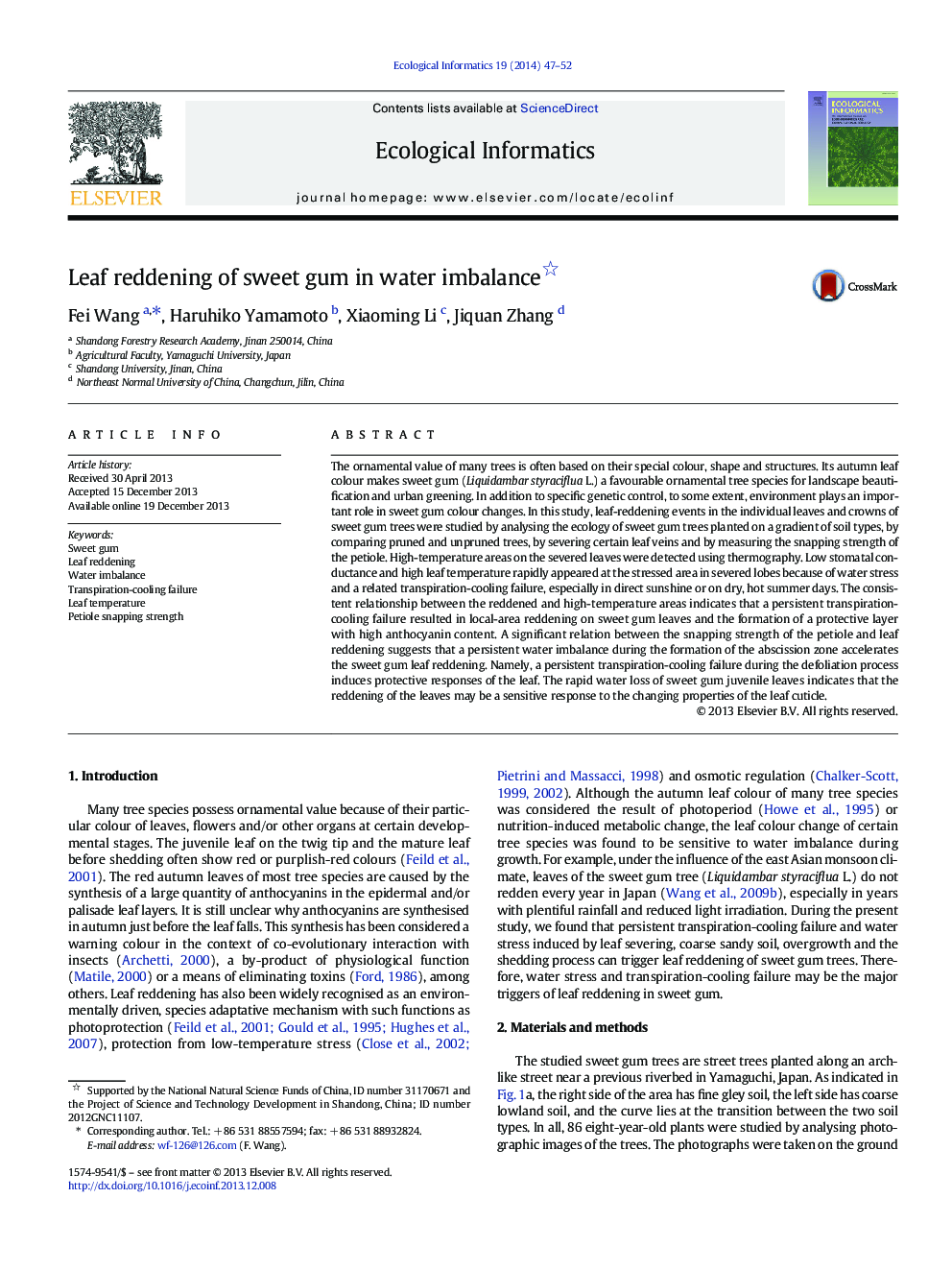| کد مقاله | کد نشریه | سال انتشار | مقاله انگلیسی | نسخه تمام متن |
|---|---|---|---|---|
| 4374950 | 1617213 | 2014 | 6 صفحه PDF | دانلود رایگان |
• Environment plays an important role in colour change of sweet gum trees.
• Reddening of juvenile leaf and shoot is consistent with high cuticle transpiration.
• Eco-info from leaf severing etc. indicates the reddening is related to water stress.
• Water/energy imbalance induces the protective response from sweet gum leaves.
• Special site design and tree pruning can be used to increase its ornamental value.
The ornamental value of many trees is often based on their special colour, shape and structures. Its autumn leaf colour makes sweet gum (Liquidambar styraciflua L.) a favourable ornamental tree species for landscape beautification and urban greening. In addition to specific genetic control, to some extent, environment plays an important role in sweet gum colour changes. In this study, leaf-reddening events in the individual leaves and crowns of sweet gum trees were studied by analysing the ecology of sweet gum trees planted on a gradient of soil types, by comparing pruned and unpruned trees, by severing certain leaf veins and by measuring the snapping strength of the petiole. High-temperature areas on the severed leaves were detected using thermography. Low stomatal conductance and high leaf temperature rapidly appeared at the stressed area in severed lobes because of water stress and a related transpiration-cooling failure, especially in direct sunshine or on dry, hot summer days. The consistent relationship between the reddened and high-temperature areas indicates that a persistent transpiration-cooling failure resulted in local-area reddening on sweet gum leaves and the formation of a protective layer with high anthocyanin content. A significant relation between the snapping strength of the petiole and leaf reddening suggests that a persistent water imbalance during the formation of the abscission zone accelerates the sweet gum leaf reddening. Namely, a persistent transpiration-cooling failure during the defoliation process induces protective responses of the leaf. The rapid water loss of sweet gum juvenile leaves indicates that the reddening of the leaves may be a sensitive response to the changing properties of the leaf cuticle.
Journal: Ecological Informatics - Volume 19, January 2014, Pages 47–52
